BMC’s Roadmachine X is the Swiss brand’s natural successor to the ground-breaking GF01.
The 2015 Bike of the Year award-winning GF01 was designed for the rigours of racing the classics and cobbles of Europe’s toughest one-day events.
The GF01 also featured a slightly easier riding position than the ultra-aggressive TeamMachine of the same era. That made it a brilliant endurance bike for regular riders.
The Roadmachine X steps things up a gear and moves BMC’s endurance offering away from racing associations and more towards being a bike that’s capable of much more than just pure road riding.
BMC Roadmachine X One geometry
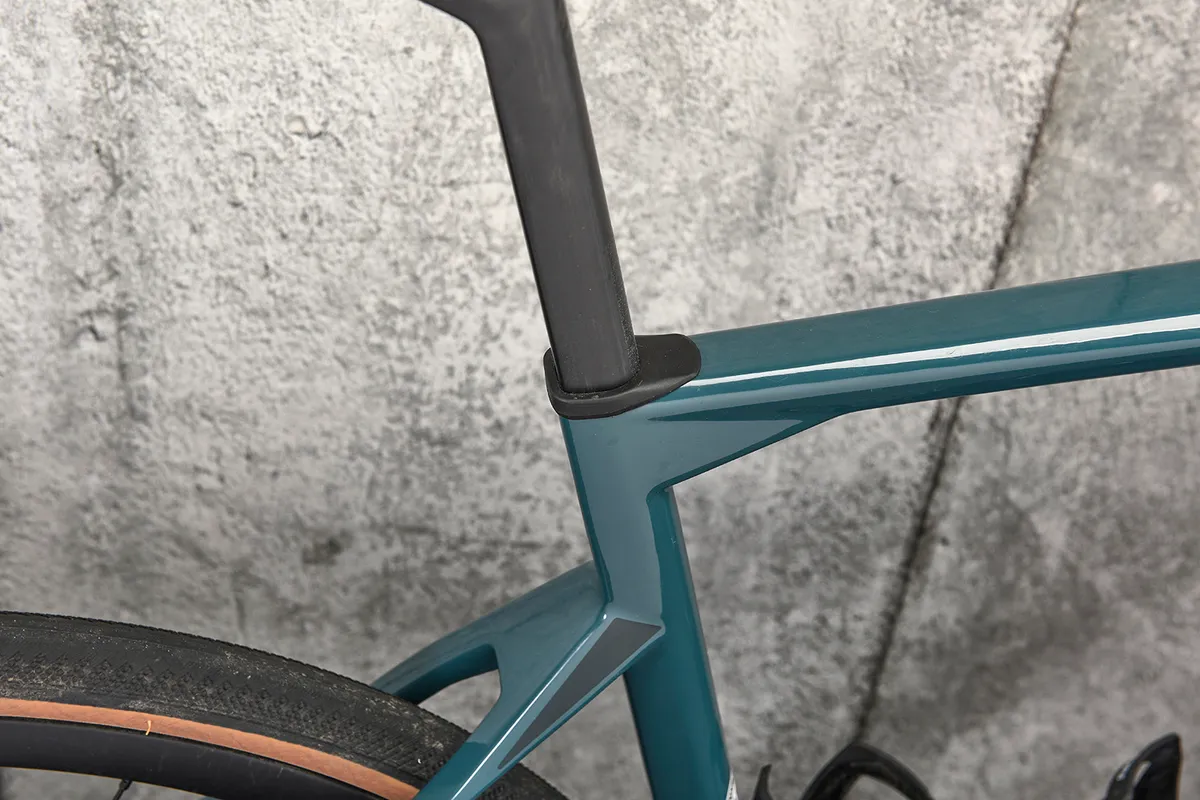
The geometry blends a reasonably long reach (394mm on my 58cm test bike) with a 610mm stack height. Both are very much in the realms of classic endurance-bike geometry. Cannondale’s latest Synapse, for reference, shares the same stack height and has a reach just a millimetre shorter.
Where the Roadmachine differs, however, is in the frame angles, and here it’s much more of a mash-up between road bike and gravel shaping.
The 72-degree head angle is edging towards gravel, slackened from accepted road standards by a degree or so, while the steep 74.2-degree seat angle is very much in the realms of speedy road sportster.
The 63mm trail on the fork is very much in the gravel realm (the trail figure is derived from a combination of head tube angle and the fork offset. This measure shows the tyre’s contact point ‘trailing’ behind the steering axis. A small measure of trail makes for a fast-handling bike; more trail slows down the steering response). The same-sized Cannondale Synapse has a 56mm trail in comparison.
The frame uses the TCC (Tuned Compliance Concept) carbon construction common to all of BMC’s bikes.
That’s not to say all of its carbon offerings have the same carbon materials and applications. The URS gravel range, for instance, has materials specific for its needs, increased vibration damping and compliance prioritised over out-and-out rigidity.
The pro-level race bikes have a lighter, stiffer construction to make for a responsive lightweight frame.
The Roadmachine hits a middle ground between the two. The TCC carbon used here is designated TCC Endurance, where the balance is shifted to making the bike responsive on the road, yet compliant enough to offer comfort and vibration reduction that’s ideal for long days out.
| | 47 | 51 | 54 | 56 | 58 | 61 |
|---|---|---|---|---|---|---|
| Seat angle (degrees) | 74.2 | 74.2 | 74.2 | 74.2 | 74.2 | 74.2 |
| Head angle (degrees) | 71.2 | 71.2 | 72 | 72 | 72 | 72 |
| Rear center (mm) | 410 | 410 | 410 | 410 | 410 | 410 |
| Front center (mm) | 583 | 599 | 597 | 609 | 621 | 635 |
| Seat tube (mm) | 420 | 457 | 500 | 522 | 539 | 573 |
| Top tube (mm) | 522 | 532 | 546 | 556 | 568 | 583 |
| Head tube (mm) | 112 | 139 | 156 | 181 | 206 | 242 |
| Fork offset (mm) | 50 | 50 | 45 | 45 | 45 | 45 |
| Trail (mm) | 63 | 63 | 63 | 63 | 63 | 63 |
| Bottom bracket drop (mm) | 71 | 71 | 71 | 71 | 71 | 71 |
| Wheelbase (mm) | 982 | 999 | 997 | 1,008 | 1,020 | 1,035 |
| Standover (mm) | 719 | 750 | 782 | 805 | 63 | 859 |
| Stack (mm) | 516 | 541 | 562 | 586 | 610 | 644 |
| Reach (mm) | 374 | 382 | 386 | 390 | 394 | 398 |
| Crank length (mm) | 170 | 170 | 172.5 | 172.5 | 175 | 175 |
| Stem length (mm) | 80 | 90 | 100 | 100 | 110 | 110 |
| Bar width (mm) | 400 | 420 | 420 | 420 | 420 | 440 |
BMC Roadmachine X One specifications
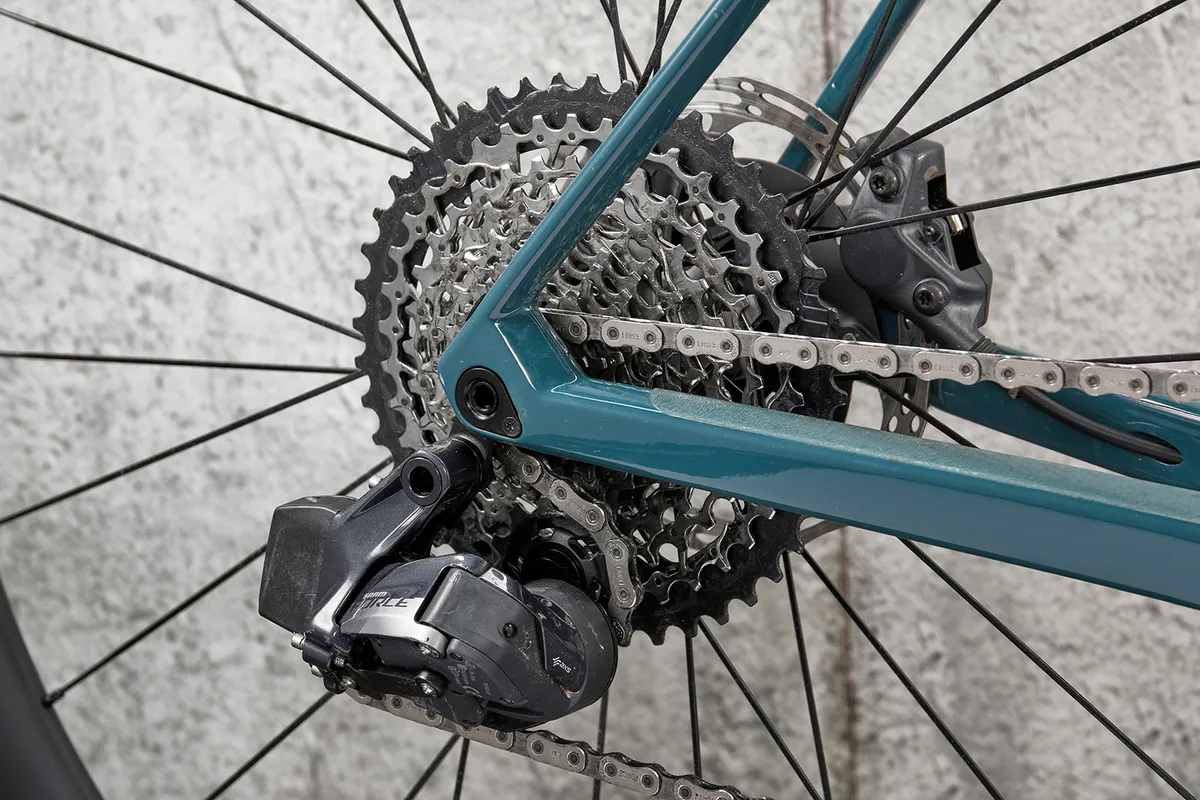
So far so very endurance bike, but it’s in the specifications where the Roadmachine X starts to really differ from its long-distance road rivals.
The signature D-shaped seatpost seen across all of BMC’s drop-bar bikes is in place here, adding its bump-softening compliance to the rear end.
The RAB02 bar is a great shape, with the drops hitting the sweet spot between compact and standard. It’s a sort of mid-compact bar that encouraged me to spend more time in the drops without getting stiff from being low down and stretched out on the bike.
I particularly liked the shape of the tops, with a teardrop cross-section that’s designed ergonomically. It feels great to hold and has an angled rearward plane that sits perfectly on the heel of your hand.
The ICS 1 stem design comes inspired by BMC’s pro-tour proven TeamMachine race bikes. With its clean hinged clamp system and internal routing, though, the fact that the X One is SRAM AXS equipped means no wires at all.
This integrated design on BMC’s road bikes usually results in full internal routing for the brakes too. On the Roadmachine X, however, these exit externally from the bars before entering the frame on the down tube and fork crown respectively.
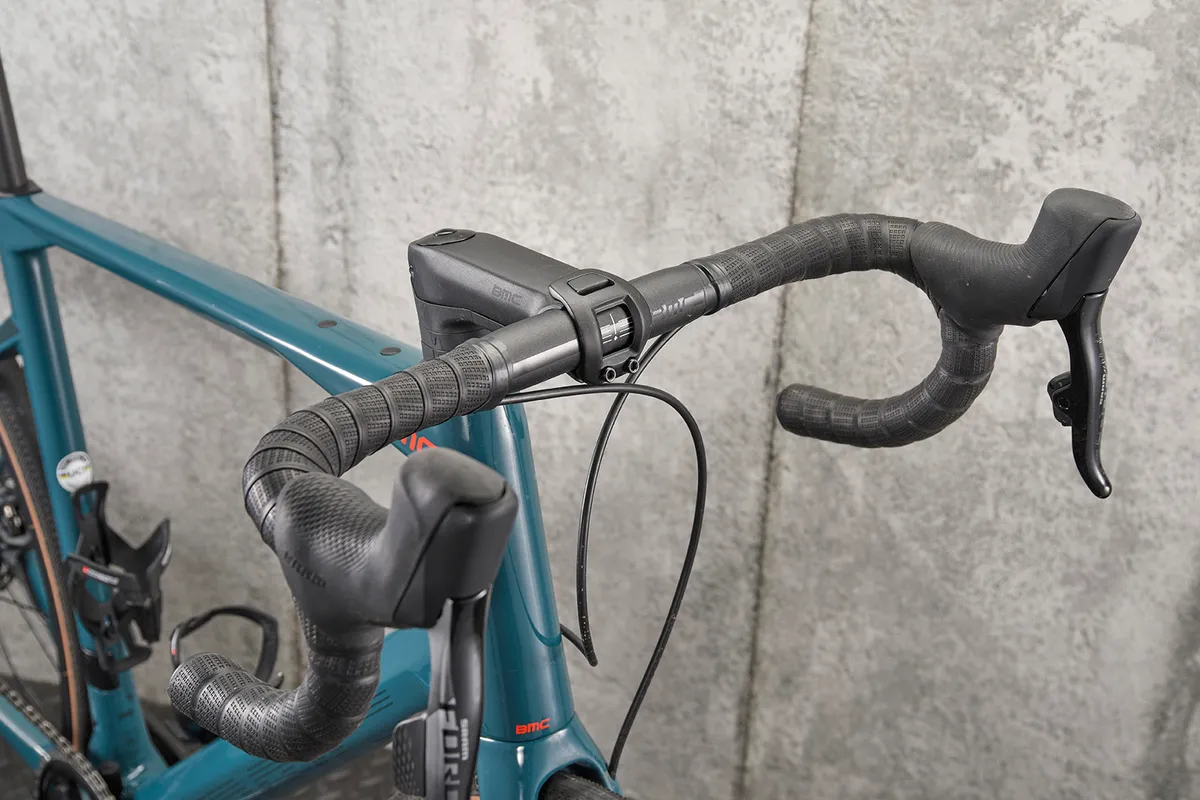
Whereas more conventional Roadmachine builds have fully hidden cables, that also means they get a different fork with a non-round steerer (so the cables and wires have a channel to enter the frame).
This model gets a standard round steerer for the fork, which you could argue means broader availability for parts (a standard headset for instance).
The Fizik Argo is pitched as a ‘gravel’ saddle, whatever that may be. It’s a great place to perch with its compact length, generous high-density padding and cleverly shaped channel with an insert to prevent underside splashing. There’s even a drain port for wet-weather riding.
The wheels are BMC’s own design called, rather uninspiringly, CRD-321 (clincher road disc). They weigh in at a very respectable 677/832g for front and rear, and feature a 35mm-deep carbon rim with a broad 21mm internal width. They’re a hooked design and are tubeless-compatible.
They’re shod with a very much all-road set of tubeless tyres in the form of WTB’s Expanse tan wall rubber in a generous 32mm width. The lightly treaded surface works wonders in the wet, and they rolled as quickly as I wanted them to for the most part.
They never felt quite as fast as my favoured 28mm-width road tyres, but offered a bunch more confidence when it came to venturing beyond standard tarmac roads. They were never sluggish on tarmac, which plenty of full-on gravel tyres are.
BMC recommends a maximum tyre width of 33mm, and I’d say that’s on the conservative side because with the 32s in situ, the frame and fork still have generous space all-round.
The biggest and most obvious deviation from classic endurance bikes comes with the Roadmachine X’s drivetrain. BMC has chosen to use SRAM’s new gravel/adventure-focused XPLR gearing in the form of Force AXS XPLR.
In a very non-road bike move, the X One comes with a 1x drivetrain using a 44-tooth chainring and a 10 to 44-tooth cassette, which gives a huge range of gears.
In comparison to a more common 2x setup, the biggest gear of 119 inches (44/10) is somewhere between a 50/11 (123 inches) and 50/12 (113 inches), and the lightest gear is 27 inches (44/44), which works out the same as a 34/34.
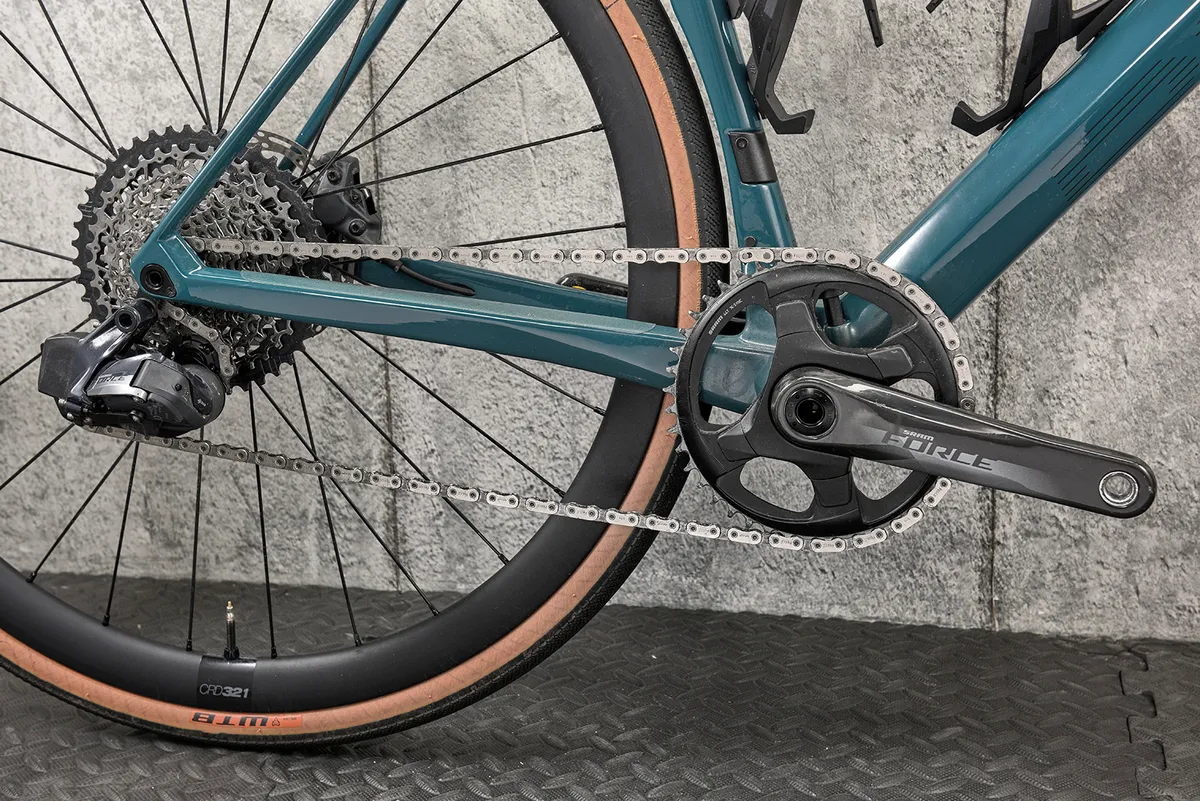
The gear progression isn’t as jumpy as I’d imagined either, with the range of 10, 11, 13, 15, 17, 19, 21 keeping the steps just a couple of teeth apart before jumping to 3 teeth (24), 4 (28, 32) and finally 6 (38, 44).
So, in the meat of the cassette, where I spend the most time (information gleaned from SRAM’s brilliant AXS app), the jumps are pretty much what I’m used to on a 2x bike.
When rising to the higher echelons of the cassette, I wasn’t concerned with close gear progression, more with just finding a gear I was comfortable climbing with, and I never found this 1x12 setup wanting.
I’ve experimented with 1x road drivetrains before (a 3T Strada with SRAM’s Force 1 11-speed mechanical drivetrain) and I did like it, though it was not quite enough to fully convince me to drop the front derailleur and 22 gears.
The advent of SRAM’s XPLR 12-speed and Campagnolo’s 13-speed Ekar group could well be what tips the scales towards 1x as an uncompromised rival to double-chainring setups.
On the Roadmachine X, it just works – the gear shifts are instant, smooth, quiet and accurate. With the addition of the Orbital fluid damper in the rear derailleur, the chain tension remains even and unflappable, no matter what the condition of the road surface is.
This being from SRAM’s wireless AXS range also means you get full access to the superb accompanying app, which helps with firmware updates, maintenance and lots of ride-analysis opportunities.
The app records rides with all the usual metrics: speeds, distance, moving time, heart rate (if paired with an HRM) and full GPS tracking with auto Strava co-uploading. Plus you get component data such as gear usage, covering time and distance spent in each gear.
You can add other elements too. If you’re using a power meter, it’ll add those metrics, and if you run a Quarq TyreWiz (a Bluetooth device that senses and transmits tyre pressures) even tyre pressure.
The app can also provide power and heart-rate analysis, making it so much more than a mere free add-on. It has the potential to be a proper training aid too.
BMC Roadmachine X ride impressions
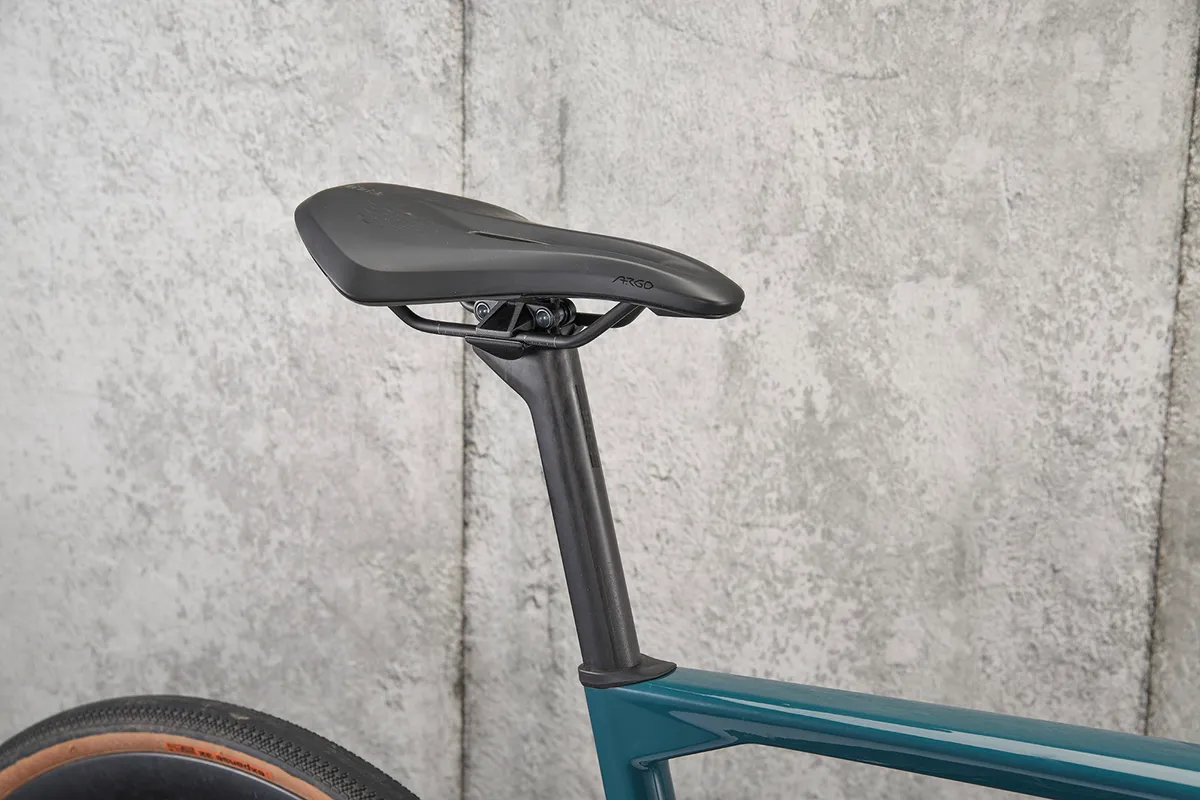
The Roadmachine has all the traits I look for in an endurance bike; it’s superbly comfortable on tarmac, aided no doubt by the plush tyres, compliant post and super ride position.
The handling is a little more subdued than bikes such as Giant’s Defy, Specialized’s Roubaix and Cannondale’s Synapse – the triumvirate of leaders in this class of bike. However, none of them can match the stability the X exudes when you get off the beaten track.
It’s a confidence-inspiring companion when the weather is poor, and its stability at speed, especially on descents, ensures fun-filled rather than fearful riding on the limit.
Heading uphill, the chassis feels rock-solid and responsive. On the flipside, I never felt as though the bike was doing anything but aiding me with its subtle smoothness, whatever the scenario. The 8.13kg weight is light, which is impressive when you consider the girth of the rubber it rolls on.
I wouldn’t claim that the Roadmachine is as capable as the latest round of the best gravel bikes, such as the brand’s own URS LT or Cannondale’s Topstone Lefty. However, it isn’t that far removed from the racing gravel designs of Cervélo’s Áspero or even Giant’s newly revamped Revolt.
BMC Roadmachine X One bottom line
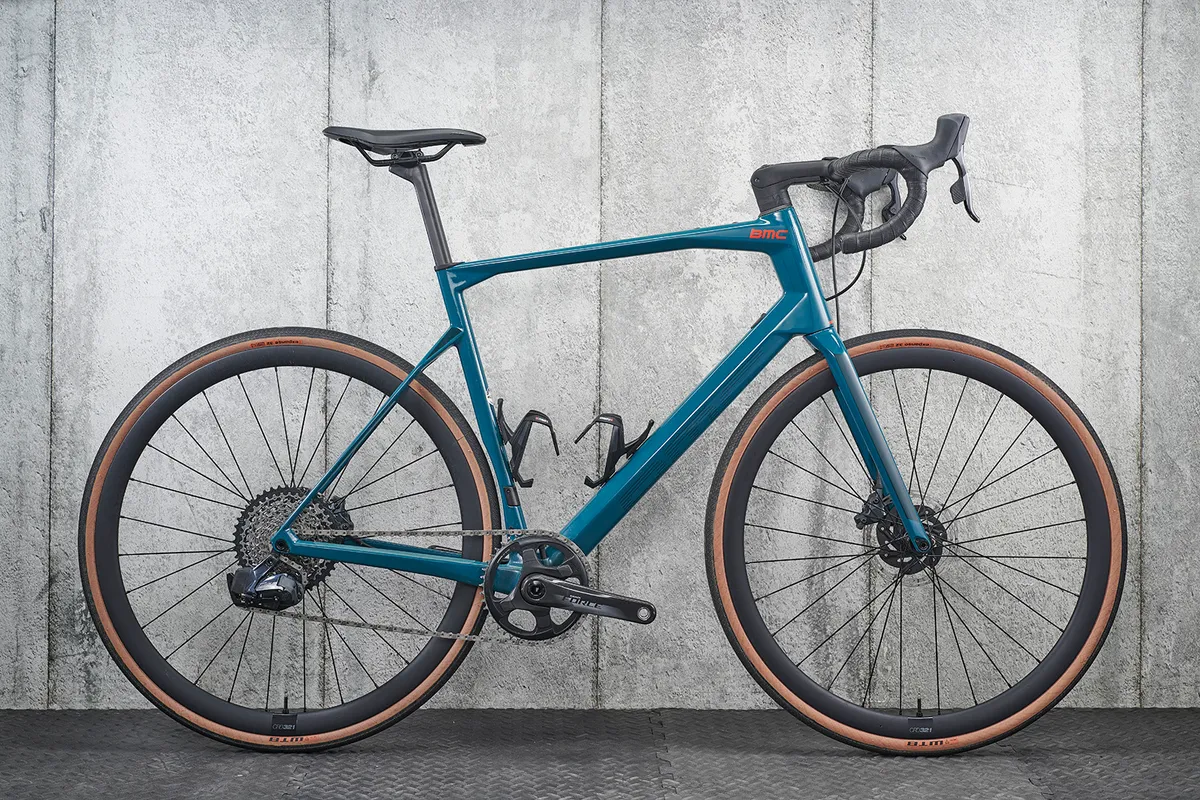
I initially approached the Roadmachine X with some trepidation. Was it an endurance bike, a lightweight gravel bike or a muddled confusion of the two?
After plenty of riding, however, I’ve come away impressed. For the sort of riding I enjoy – big days out with plenty of exploration and looking for new experiences – the Roadmachine X makes the ultimate sense.
It won’t be phased by un-metalled roads, byways, towpaths, or even the odd excursion into singletrack (though if that’s your bag, there are plenty of very capable gravel bikes around).
I didn’t once find the 1x gearing a hindrance on purely road rides because the spread matches a classic 50/34 – 11-32 endurance setup in range.
If you’re looking for a bike that’s great on the road and capable of much more beyond, and have neither the space, finances, or even inclination to have both a road bike and a gravel bike, the Roadmachine may just fit into your life perfectly.
If the X One’s price tag is a bit rich for your tastes and pocket, BMC does offer the X Two at £4,450 with SRAM’s Rival-level AXS XPLR drivetrain.
Endurance Bike of the Year 2022 | How we tested
The best endurance road bikes combine a comfortable ride position with heaps of versatility – including features such as mudguard or pannier rack mounts – and speed, to create a useful platform that will fare well no matter the ride.
Testing for our 2022 Endurance Bike of the Year category began with a high-tempo 2.5-hour ride to get an early impression of a bike's ride quality and to carry out any adjustments.
For the meat of this year's testing, each bike was taken on the same 82-mile/132km loop through rural Wiltshire.
After this, we rode the bikes back-to-back, coming to a decision on the best by comparing how well each handled across a variety of terrain and, in a competitive market, how its spec compares with the other bikes on test.
Our 2022 Endurance Bike of the Year contenders are:
- BMC Roadmachine X
- Bombtrack Audax
- Cannondale Synapse Carbon LTD RLE (category winner)
- Cervélo Caledonia Ultegra Di2
- Trek Domane SL 6 eTap
Thanks to…
Thanks to our sponsors HUUB, Lazer, 100% and Garmin for their support in making Bike of the Year happen.
Product
| Brand | bmc |
| Price | 5999.00 EUR,5700.00 GBP,6299.00 USD |
| Weight | 8.1300, KILOGRAM (58cm) - |
Features
| Fork | Roadmachine X Premium Carbon with Tuned Compliance Concept Endurance |
| br_stem | BMC ICS1 – Integrated Cockpit Design |
| br_chain | SRAM FORCE 12-speed |
| br_frame | Roadmachine X Premium Carbon with Tuned Compliance Concept Endurance |
| Tyres | WTB Expanse, 32mm |
| br_brakes | SRAM FORCE eTap AXS HRD, Centerline X rotors (160/160) |
| br_cranks | SRAM FORCE AXS 1 44T |
| br_saddle | Fizik Terra Argo X3 |
| br_wheels | CRD-321 Carbon, tubeless-ready, 35mm |
| br_shifter | SRAM FORCE eTap AXS HRD |
| br_cassette | SRAM FORCE AXS |
| br_seatpost | Roadmachine X Premium Carbon D-shaped seatpost, 15mm offset |
| br_handlebar | BMC RAB 02, Ergo Top Shape, Compact Bend |
| br_availableSizes | 47, 51, 54, 56, 58, 61cm |
| br_rearDerailleur | SRAM FORCE eTap AXS |
